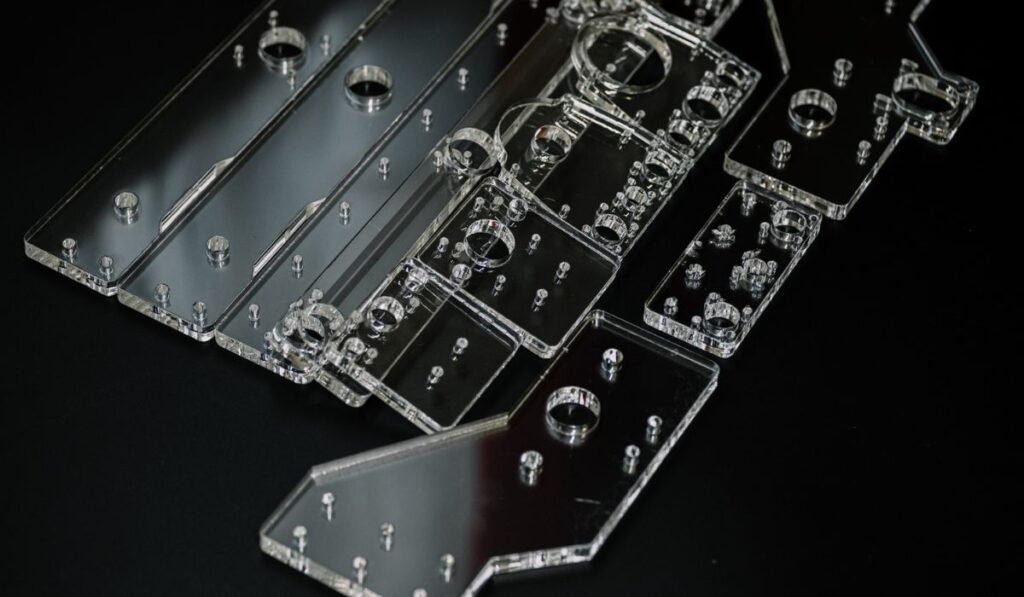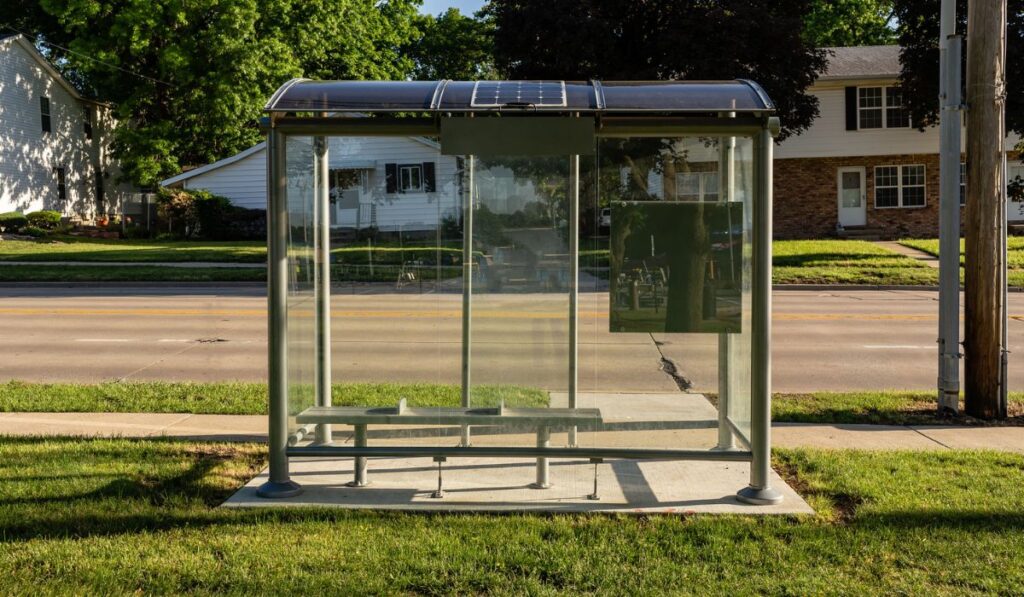Plexiglass, also known as acrylic glass or PMMA (polymethyl methacrylate), is a transparent thermoplastic material that’s widely used as a substitute for glass due to its excellent optical clarity, high impact resistance, and weather resistance. But is plexiglass waterproof?
Plexiglass is a non-porous material that doesn’t absorb water, so it can be considered waterproof. However, water can still seep through gaps or seams between plexiglass panels, so proper sealing and installation are important when using this material.
Before you use plexiglass for waterproofing, it’s important to consider whether there are any risks to doing so. Let’s take a closer detailed look at the water resistance of plexiglass so that you can make the right decision.
What Is Plexiglass Made Out Of?

Plexiglass is a type of plastic that looks like glass. It’s made up of tiny molecules that are linked together to form a strong, clear material.
Plexiglass is a polymer that comprises many repeating units of a monomer. The monomer in plexiglass is methyl methacrylate (MMA), a colorless liquid with a strong odor.
The polymerization process begins with the reaction of the MMA monomers with a small amount of an initiator in the presence of heat. That reaction causes the MMA molecules to link and form a long-chain polymer.
At the Molecular Level
At the molecular level, plexiglass comprises a repeating MMA unit consisting of a methyl group (CH3) and a methacrylate group (C5H8O2).
When the MMA monomers are polymerized, they link together through covalent bonds, which are strong chemical bonds that share electrons between atoms.
The resulting polymer chain comprises thousands of repeating units held together by strong intermolecular forces, such as Van der Waals forces and hydrogen bonds.
The arrangement of the MMA monomers in the plexiglass polymer creates a highly ordered and stable structure, which gives plexiglass its excellent optical clarity.
The methyl groups on the MMA monomers are nonpolar. Therefore, they don’t interact strongly with light, which reduces the amount of light scattering and provides a clear view through the material.
Is Plexiglass Waterproof?
Yes, plexiglass is waterproof. That said, if you’re using multiple plexiglass panels, it’s important to seal them properly to ensure that water isn’t able to seep through any of the cracks.
The Molecular Properties that Impact Water Resistance
At the molecular level, plexiglass comprises a repeating MMA unit consisting of a methyl group (CH3) and a methacrylate group (C5H8O2). These monomers are linked together through covalent bonds to form a long-chain polymer.
Water is a polar molecule, which means it has a positive end (the hydrogen atoms) and a negative end (the oxygen atom).
When water comes into contact with plexiglass, the polar nature of water causes it to be attracted to the polar methacrylate groups on the plexiglass surface.
This attraction can cause water molecules to penetrate the material and diffuse through the polymer chains.
The diffusion of water molecules through plexiglass can cause various problems, including discoloration, warping, and cracking.
Breaking Molecular Bonds
When water molecules diffuse through the plexiglass, they can react with the polymer chains and break down the chemical bonds that hold the material together.
That can weaken the material and cause it to become brittle over time. Additionally, water can cause the material to expand, leading to warping or cracking.
It’s important to take proper care of the material and avoid prolonged exposure to water or moisture.
Apply Weather-Resistant Sealant
If plexiglass is used in outdoor applications, it’s recommended to use a weather-resistant coating or sealant to protect the material from moisture.
Proper cleaning and maintenance can also help prevent water damage and ensure the material’s longevity.
Is Plexiglass Weather Resistant?

At the molecular level, plexiglass has several properties that make it highly weather resistant. For example, plexiglass has a high molecular weight, which makes it less susceptible to degradation from UV light and other environmental factors.
Resistant to Changes in Temperature
Also, plexiglass has a high glass transition temperature (Tg), which can withstand temperature changes without becoming brittle or cracking.
We can think of plexiglass as a sturdy shield that can protect against the elements.
The tightly linked polymer chains of plexiglass form a strong and durable material that can withstand exposure to sunlight, rain, wind, and temperature changes without significant damage.
That makes plexiglass popular for outdoor applications, such as signs, displays, and protective barriers.
Plexiglass Is Susceptible to Damage by Long-Term UV Exposure
However, it’s important to note that prolonged exposure to extreme environmental conditions can still cause damage to plexiglass over time.
For example, prolonged exposure to UV light can cause discoloration or yellowing of the material. Similarly, extreme temperature changes or physical impacts can cause warping, cracking, or other forms of damage.
Therefore, it’s important to care for the plexiglass properly and avoid exposing it to extreme environmental conditions whenever possible.
How Long Will Plexiglass Last Outdoors?
The longevity of plexiglass outdoors depends on several factors, including the material’s quality, the panel’s thickness, the specific outdoor environment, and the amount of maintenance and care provided.
Hot Climates
In hot, dry climates, such as desert regions, plexiglass can become more susceptible to cracking and brittleness due to the high levels of UV exposure.
Cold Climates
Cold climates can affect plexiglass due to the impact of cold on the material’s physical properties. For example, when exposed to very low temperatures, plexiglass can become more brittle and prone to cracking or breaking.
That’s because the cold temperatures cause the material to contract, which can put stress on the surface of the plexiglass.
Additionally, if the plexiglass is already damaged or weakened, exposure to cold temperatures can exacerbate the damage and cause the material to fail.
Humid Climates
In humid or coastal environments, plexiglass can be more prone to discoloration or yellowing due to salt spray and moisture exposure.
Dry Climates
In a dry climate, plexiglass can be more susceptible to damage due to its increased exposure to UV light.
High sunlight levels in dry climates can cause plexiglass to become brittle or discolored over time, particularly if the material is improperly maintained or protected.
High Pollution Levels and Acid Rain
Pollution can harm plexiglass due to its chemical properties. Exposure to pollutants in the air can cause plexiglass to become discolored or stained over time, particularly if the material is not properly maintained or cleaned.
Acid rain, in particular, can cause chemical damage to the surface of plexiglass and accelerate the material’s breakdown.
